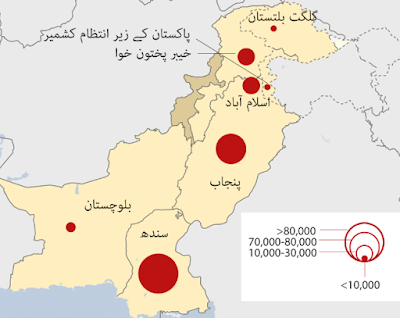Reality Check: Did the Corona epidemic in Wuhan really arrive in August last year?
A study conducted in the United States has been criticized for saying that the corona virus could have been present in the Chinese city of Wuhan as early as August last year. The Harvard University study, which came out earlier this month, gained notoriety, but China has rejected it and its methodology has been questioned by independent scientists.
What does research say?
The study was not reviewed by peer-reviewed experts, but was based on satellite images of traffic around Wuhan hospitals and an online search for specific medical symptoms. Based on satellite images, it said that from the end of August to December 1, 2019, there has been a significant increase in car parking outside the city's six hospitals. The Harvard report also says that coincidence has led to an increase in searches on the Internet for symptoms such as "cough" and "hand", which are possible symptoms of corona.
This could be an important discovery because the case, which was initially reported in Wuhan, did not come to light until early December. Haqiqin writes: 'While we cannot confirm whether the (traffic and search) volume increase was directly linked to the new virus, our evidence confirms other recent works that indicate this. "It simply came to our notice then.
The Harvard study received a lot of media coverage, and US President Trump, who has been a vocal critic of China's response to the epidemic, tweeted a Fox News report highlighting the researchers' findings. And this tweet has been viewed more than three million times.
So is the evidence correct?
The study claims that the popular Chinese search engine Baidu had an increase in online queries regarding the symptoms of the corona virus and in particular 'diarrhea' or 'diarrhea'. But Baidu officials have called their findings controversial, saying that in fact the search for "diarrhea" has declined over the period.
So what's going on?
The term used in Harvard University research actually comes from the Chinese language as a 'symptom of diarrhea'. We tested it on Baidu's tool to let users know from Google Trends which words or things are being searched for the most. The search for the term 'symptom of diarrhea' has actually increased since August 2019.
But we also only discovered about 'diarrhea' which is a common term for diarrhea, so we found that from August 2019 until the onset of the epidemic, the search for it has really decreased. Benjamin Reeder, lead author of the Harvard study, told the BBC: "The search term we used for 'diarrhea' was chosen because it was the best match for Code 19 confirmed cases and it was called Corona. It was also suggested as a search term for viruses.
We tried to find out the popularity of Corona's two symbols 'fever' and 'trouble breathing'.
After August, the search for 'fever' increased, while the search for 'cough' and 'difficulty breathing' decreased. The study also raises questions about whether diarrhea is a symptom of the disease.
An extensive study of about 17,000 corona virus patients in the UK found that the most common symptoms were coughing, fever and difficulty breathing, followed by the seventh most common symptom.
What does the number of cars mean?
The Harvard study found that between August and December 1, 2019, there was an increase in the number of cars in the parking lots of six hospitals. But we see some serious flaws in their analysis. The report says that car parking under trees and in the shade has not been included to avoid overcrowding.
However, in the satellite images released to the media, there are large areas of hospital car parks that cannot be seen due to tall buildings, which makes it impossible to accurately estimate the number of cars there. In the tweet below, we have shown the parts with white boxes where the obstruction of the buildings does not give a clear picture.
Tianyu Hospital also has an underground car park that can be seen in Baidu's Street View function, but satellite images show only the entrances and no underground car parks. Benjamin Reeder, one of the study's authors, said: "We certainly can't account for underground parking at any time in the study, and that's one of the shortcomings of this type of research."
Concerns have also been raised about the choice of hospitals for the study.
One of the six hospitals is Hubei Women's and Children's Hospital, but children rarely need hospital treatment for the corona virus. In response, the authors say that even if the hospital is excluded from research, the use of car parks has increased in the rest of the hospital.
The researchers should also compare their data with hospitals in other Chinese cities to see if the increase in internet search and traffic was only in Wuhan, which was the source of the outbreak.








Comments
Post a Comment